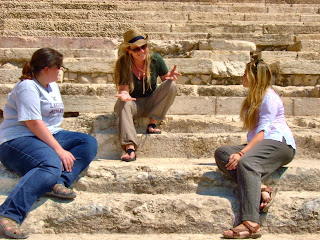First Impressions: Grant Osborne's Matthew
While at work last night, my wife called me to let me know that a package from Zondervan arrived. I asked her what is was, and she said, "Don't know, but it's pretty thick." Well, that comment certainly piqued my curiosity, so I had her open it. Alas, once opened we discovered it was Grant Osborne's Matthew in the Zondervan Exegetical Commentary on the New Testament (ZECNT) series. "Thick" is a very fitting description, rivaling the size of Ramsey Michaels' John (NICNT), checking in at a whopping 1154 pages!
Thus far, I have only read through the introductory material (21-47), but here is my initial reaction. First, this is a commentary that is targeted for pastors. In the preface, Osborne traces the genesis of this commentary back over 30 years, when he took a sabbatical at Tyndale House in hopes of writing a commentary on Matthew (13). Osborne is emphatic on his emphasis in writing this commentary for pastors, stating:
"If I were to dedicate the rest of my life to one single, thing, it would be bringing the Bible back into the center of the church's life. One of my greatest worries is the 'dumbing down' of the church, and in my forty-plus years of ministry I have seen biblical preaching receive less and less place in the life of the church. I cannot help but wonder if some actually believe the Bible is the Word of God when they do not care what it means and do not want to proclaim its truths to their congregations. ...Thanks be to God that there are many pastors who are standing sure on the Word and proclaiming it to the best of their abilities. This commentary is for them" (13).
In the next post, I will focus on some of the unique features in the commentary proper.
Thus far, I have only read through the introductory material (21-47), but here is my initial reaction. First, this is a commentary that is targeted for pastors. In the preface, Osborne traces the genesis of this commentary back over 30 years, when he took a sabbatical at Tyndale House in hopes of writing a commentary on Matthew (13). Osborne is emphatic on his emphasis in writing this commentary for pastors, stating:
"If I were to dedicate the rest of my life to one single, thing, it would be bringing the Bible back into the center of the church's life. One of my greatest worries is the 'dumbing down' of the church, and in my forty-plus years of ministry I have seen biblical preaching receive less and less place in the life of the church. I cannot help but wonder if some actually believe the Bible is the Word of God when they do not care what it means and do not want to proclaim its truths to their congregations. ...Thanks be to God that there are many pastors who are standing sure on the Word and proclaiming it to the best of their abilities. This commentary is for them" (13).
One of the ways Osborne aids the pastor in this commentary is to briefly summarize what other scholars say about a given passage. His bibliography is representative (49-56), and all the major players are represented (e.g. Davies and Allison, France, Keener, Luz, Nolland, etc.)
The introduction contains the usual preliminary matters, authorship: Matthew, as held by the early church (33-34), date: AD 65-67 (35), genre: Matthew's gospel is most similar to Greco-Roman, Jewish, and Hellenistic biographies (30-31), audience: Mainly Jewish, but also targeted to a Gentile audience (31-33), sources: Q, M, L (35-38), structure: follows the narrative-discourse pattern (40-47).
Other introductory matters, as befits this series, are unique. The first section focuses on the studying and preaching of Matthew's Gospel (21-22), studying the Gospel's plot both at the macro and micro level (22-24), studying redactional changes (24-25), studying the characters and dialogue (25), and studying the implied reader and performing reader identification (25-27). Other issues are taken up, such as historical reliability (27-30), and Matthew's use of the OT (38-40).


Comments
I am still waiting for publishers to fill my box with books. :)